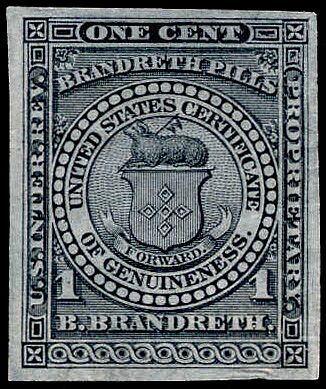
B. Brandreth

Brandreth's Pills were first manufactured around 1835, in New York City. The operation soon moved to Ossining. At some point Allcock's Porous Plasters became another product line. Brandreth was always attuned to advertising, and commissioned private die stamps early on. These were issued from July, 1863 through February, 1865. 4,925,084 were issued on old paper and 10,542,572 on silk paper. 105,600 on old paper and 550,000 on silk paper were perforated. The copy shown is on old paper.
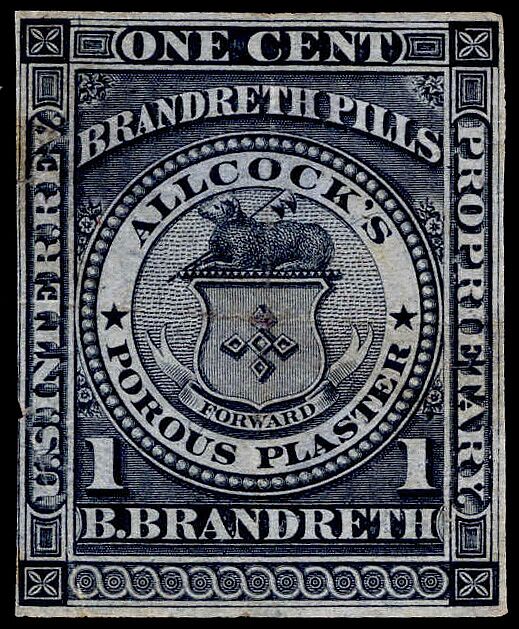
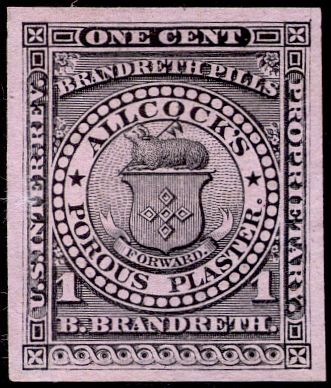
When Brandreth asked for a larger version of his stamp for use on plasters the phrase "United States Certificate of Genuineness" in the design was not well received by the government. The solution was to substitute "Allcock's Porous Plasters" in the center circle. The large stamps were considered inconvenient and unattractive, so only one delivery of 220,000 on silk paper was made, in January of 1875.
Once the question of the "Certificate of Genuineness" wording had been disapproved for the large stamps, Brandreth was forced to remove it from the small version as well. The new design was issued from March, 1875 until April 27, 1883. 7,843,243 were printed on silk paper and 25,562,738 on pink and watermarked papers. A small number of the watermarked ones were perforated.
The copy above is on pink paper.
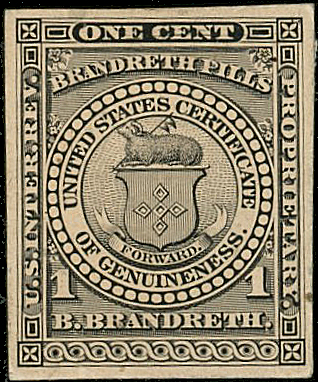
A card proof of the original Brandreth stamp.
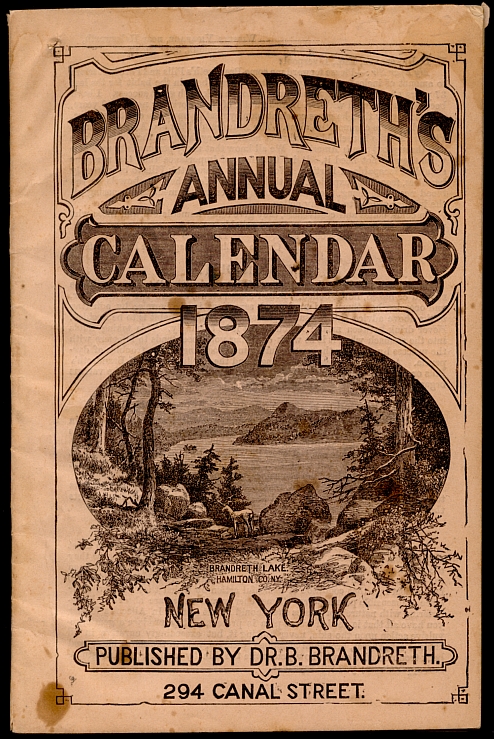
The Brandreth calendar from 1874, featuring a picture of Brandreth Lake, Hamilton County, New York on the cover.
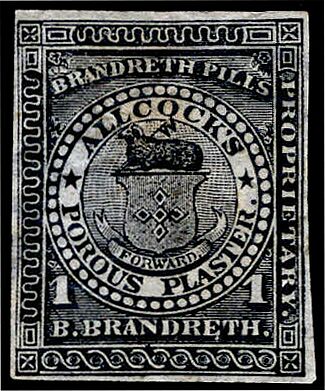
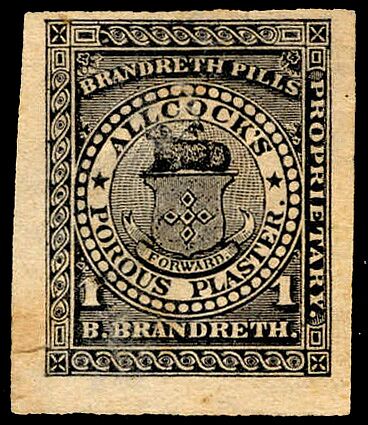
After the tax ended the firm had facsimile stamps printed. The first versions kept the numeral "1" as part of the design. The copy to the left has candy-ribbon ornaments where "U.S. Inter. Rev." and "One Cent" were in the original stamp. They are replaced by a braided design on the version to the right.
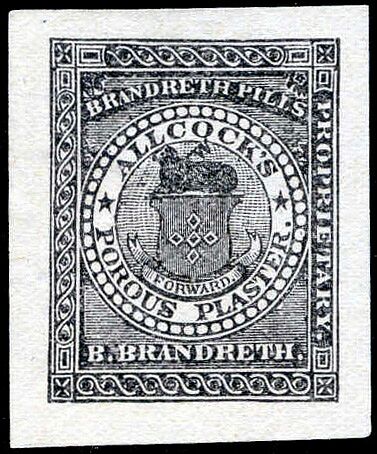
Eventually the numerals were removed from the design.
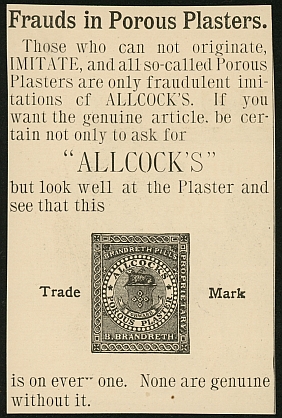
An advertisement featuring the facsimile label shown above.
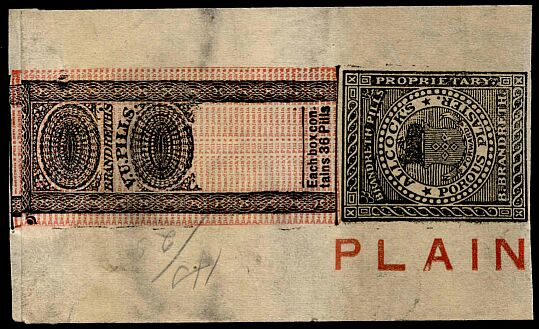
A Brandreth wrapper showing that the facsimile stamps were part of the overall label at some time in their use.